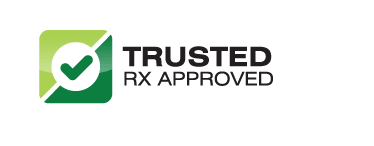Lidocaine and Prilocaine topical
What is this medicine?
LIDOCAINE and PRILOCAINE are local anesthetics (numbing medicines). They work by blocking nerve signals in your body. Lidocaine and prilocaine topical (for the skin) is a combination medicine used to numb the skin or surfaces of the penis or vagina. This medicine is used to prepare you for minor surgery or medical procedures on these areas. Lidocaine and prilocaine topical may also be used for purposes not listed in this medication guide.
What should my health care professional know before I take this medicine?
You should not use lidocaine and prilocaine topical if you are allergic to any type of numbing medicine.
Fatal overdoses have occurred when numbing medicines were used without the advice of a medical doctor (such as during a cosmetic procedure like laser hair removal). However, overdose has also occurred in women treated with a numbing medicine before having a mammography.
Be aware that many cosmetic procedures are performed without a medical doctor present.
To make sure lidocaine and prilocaine topical is safe for you, tell your doctor if you have:
-
a blood cell disorder called methemoglobinemia;
-
liver disease;
-
a genetic enzyme deficiency called glucose-6-phosphate dehydrogenase (G6PD) deficiency; or
-
a family history of methemoglobinemia, or any genetic enzyme deficiency.
FDA pregnancy category B. Lidocaine and prilocaine topical is not expected to harm an unborn baby. Tell your doctor if you are pregnant or plan to become pregnant during treatment.
Lidocaine and prilocaine can pass into breast milk and may harm a nursing baby. Tell your doctor if you are breast-feeding a baby.
How should I use this medicine?
Follow all directions on your prescription label. Do not apply this medicine in larger amounts than recommended.
You may need to apply lidocaine and prilocaine topical at home up to 4 hours before your surgery or procedure. You will be given instructions about how much medicine to use and how long to leave it on the skin. Follow these directions carefully. Ask your doctor or pharmacist if you have any questions.
Use the smallest amount of medicine needed to numb the skin. Your body may absorb too much of this medicine if you use too much, if you apply it over large skin areas, or if you apply heat, bandages, or plastic wrap to treated skin areas. Skin that is cut or irritated may also absorb more topical medication than healthy skin.
You may need to cover the skin to help keep the medicine in place. Do not cover treated skin unless your doctor has told you to.
Carefully follow dosing instructions when applying this medicine to a child. Lidocaine and prilocaine topical doses are based on weight in children. Do not allow a child to use this medicine without adult supervision.
What may interact with this medicine?
Tell your doctor about all medicines you use, and those you start or stop using during your treatment with lidocaine and prilocaine topical, especially:
-
chloroquine, dapsone, nitrofurantoin, isosorbide dinitrate, nitroglycerin, nitroprusside, quinine;
-
heart rhythm medication--amiodarone, dofetilide, dronedarone, mexiletine, sotalol, tocainide, and others;
-
seizure medicine--phenobarbital, phenytoin, primaquine; or
-
a sulfa drug--Bactrim, Septra, SMX-TMP or SMZ-TMP, and others.
This list is not complete. Other drugs may interact with lidocaine and prilocaine topical, including prescription and over-the-counter medicines, vitamins, and herbal products. Not all possible interactions are listed in this medication guide.
What should I watch for while taking this medicine?
An overdose of numbing medicine can cause fatal side effects if too much of the medicine is absorbed through your skin. Overdose symptoms may include uneven heartbeats, seizure (convulsions), coma, slowed breathing, or respiratory failure (breathing stops).
Use the smallest amount of this medicine needed to numb the skin. Do not use large amounts of lidocaine and prilocaine topical, or cover treated skin areas with a bandage or plastic wrap without medical advice.
Do not allow this medicine to come into contact with your eyes. If it does, rinse with water. Do not take by mouth. Lidocaine and prilocaine topical is for use only on the skin. Avoid accidentally injuring treated skin areas while they are numb. Avoid coming into contact with very hot or very cold surfaces.
What if I miss a dose?
Call your doctor for instructions if you forget to apply lidocaine and prilocaine topical at the time needed before your surgery or medical procedure.
What if I overdose?
An overdose of numbing medicine can cause fatal side effects if too much of the medicine is absorbed through your skin and into your blood. Symptoms may include uneven heartbeats, seizure (convulsions), slowed breathing, coma, or respiratory failure (breathing stops).
Lidocaine and prilocaine applied to the skin is not likely to cause an overdose unless you apply more than the recommended dose.
What side effects may I notice from this medicine?
Get emergency medical help if you have any of these signs of an allergic reaction: hives; difficulty breathing; swelling of your face, lips, tongue, or throat.
Call your doctor at once if you have:
-
severe burning, stinging, or irritation where the medicine was applied;
-
swelling or redness;
-
sudden dizziness or drowsiness after medicine is applied;
-
confusion, blurred vision, ringing in your ears;
-
bruising or purple appearance of the skin; or
-
unusual sensations of temperature.
Common side effects may include:
-
mild burning where the medicine is applied;
-
itching, rash; or
-
changes in skin color where the medicine was applied.
This is not a complete list of side effects and others may occur.
Where can I keep my medicine?
Store at room temperature away from moisture and heat. Do not allow the cream to freeze.





